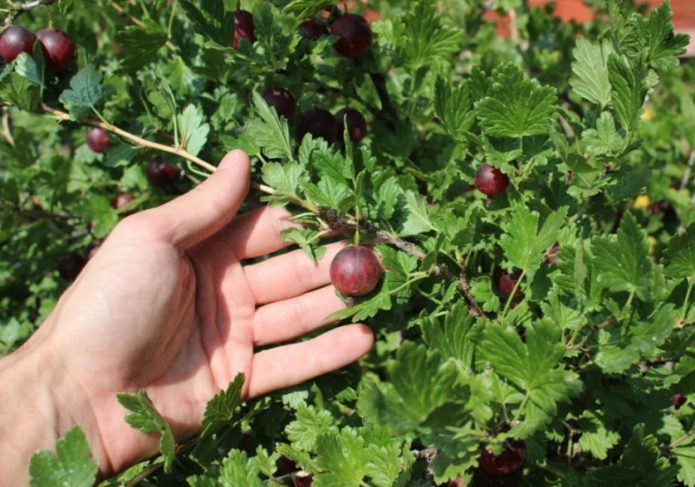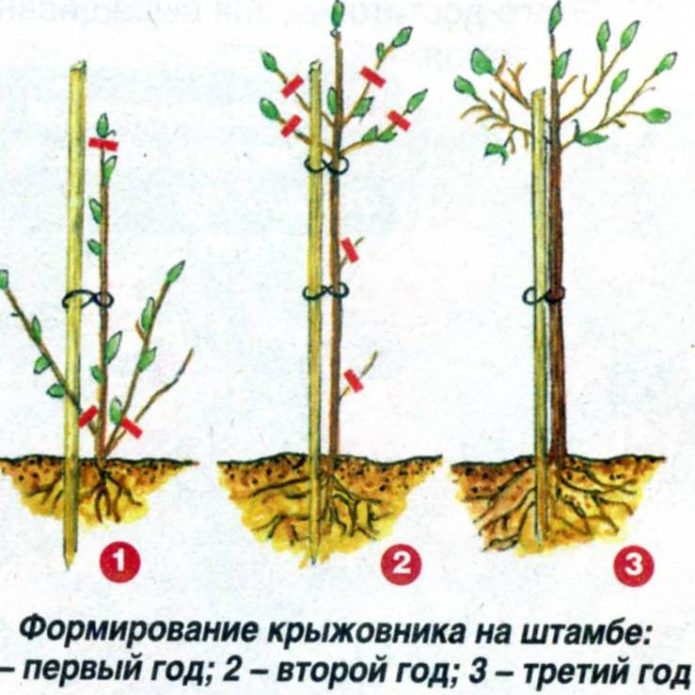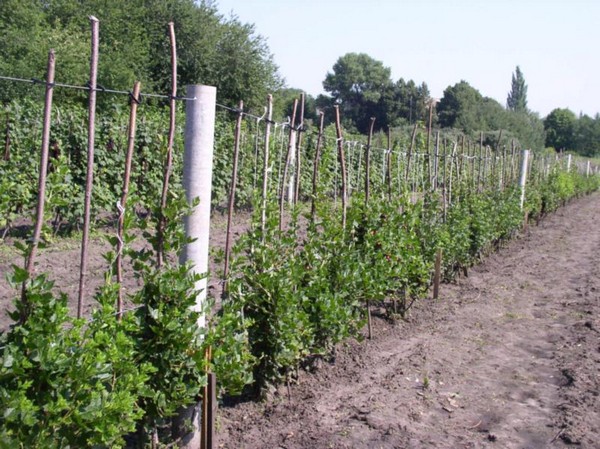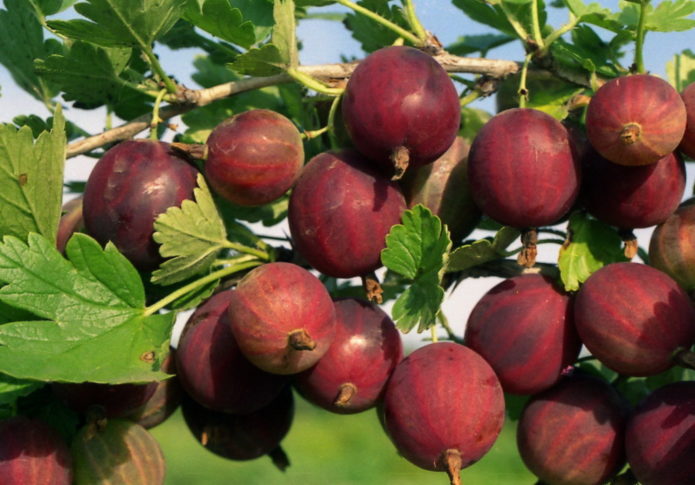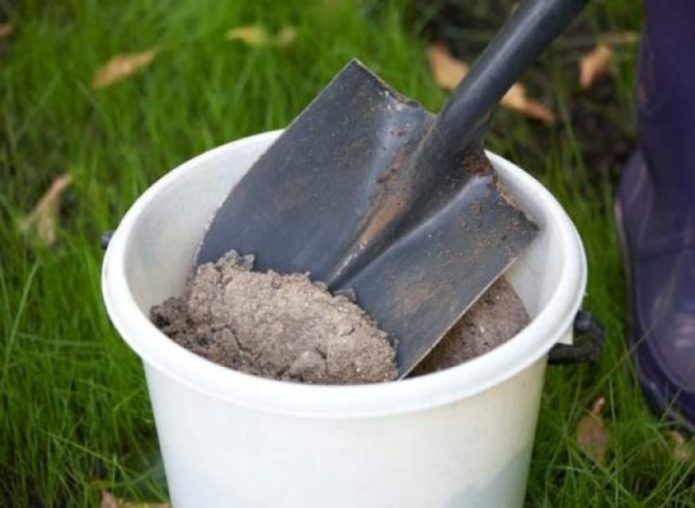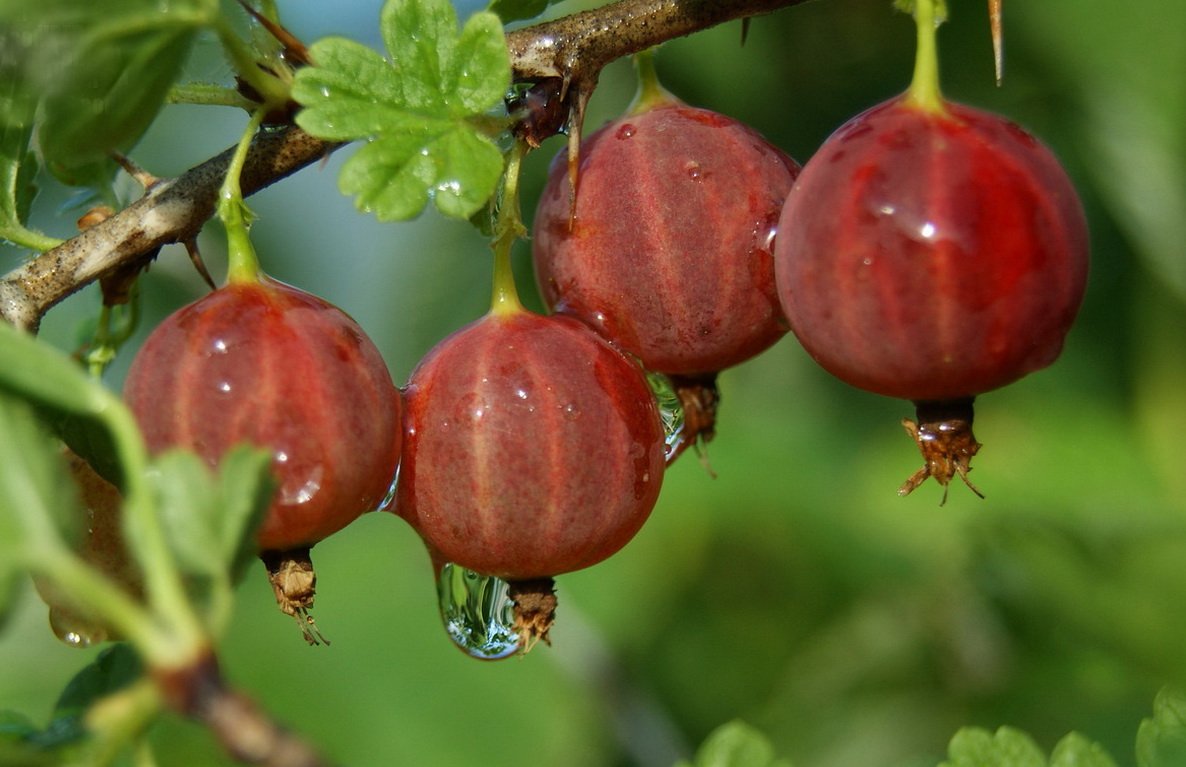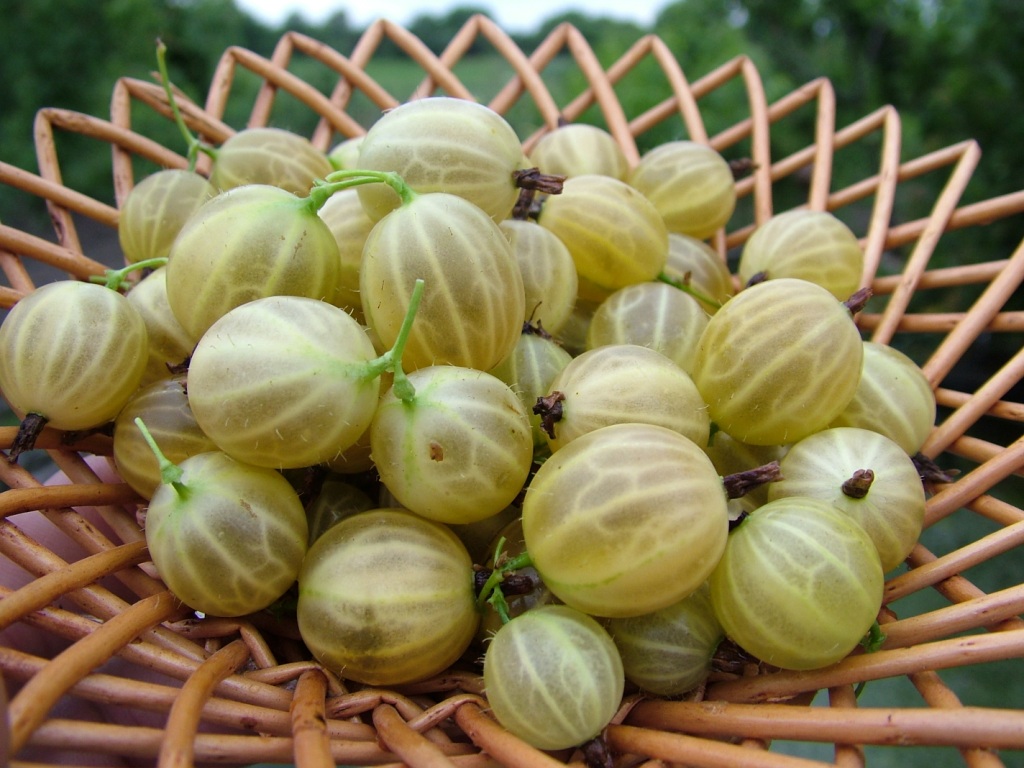Any healthy gooseberry bush is replenished with new branches every year. Such growths strongly thicken the plant, preventing the lower branches of sunlight and oxygen. Due to insufficient air exchange in the crown, the shrub weakens, the berries become small, and in a neglected case, the bush may even die. In order for the berry harvest to please the gardener, gooseberry pruning and the formation of a bush are necessary every fall. This is a difficult procedure that has its own rules and requires certain skills.
Content
What time of year should gooseberries be cut?
The main rule in pruning currant and gooseberry bushes in the fall is to carry out the procedure before the juice begins to move along the branches, which leads to bud break.
The gooseberry is the first garden dweller to wake up after a winter sleep, so in the spring it is impossible to have time to properly cut the branches. If you cut off the extra shoots after the beginning of the growing season, the plant will lose the amount of juice already spent on the development of the first buds. Such untimely intervention can lead to illness and death of the culture. Therefore, experienced summer residents recommend starting crown cleaning in the fall.
It is strictly forbidden to prune branches during the summer months, since during this period the gooseberries are in the active growing season. If you remove the shoots in summer, new shoots will not be able to grow stronger by winter and die with the first frost.
Experts advise to cut the bush for the first time even before planting, and then every season to maintain the crown and rid it of infected and aged branches. It is important to carry out these procedures always at the same time. So, it is unacceptable to first prune branches in October, and the next year - in March. Otherwise, the plant will experience severe stress and may die.
When is the autumn procedure
The best time to do gooseberry pruning is the period when all the greens fall from the bush. Most often this happens from 10 to 20 November. The timing is approximate, in each region such a process can occur at different times.
When planning a procedure, each gardener should be guided by the climatic conditions of the region of residence, the outside temperature and the weather regime. It is optimal to prune when the sap flow is completed. The procedure is carried out at least one month before the start of severe frosts. Treated bushes should be given some time to heal after pruning and prepare for winter.
If in the region where the gooseberry is grown, the climatic conditions are too harsh, the pruning is transferred to the spring. Otherwise, the autumn formation of the shrub can negatively affect the health of the plant. The wounds from the cuts will not have time to heal until severe frosts, the immune system will weaken, and the gooseberry can get sick or die.In autumn, in such areas, partial thinning and removal of broken branches is carried out.
What to prepare for pruning a bush
Gooseberry pruning must be fully prepared.
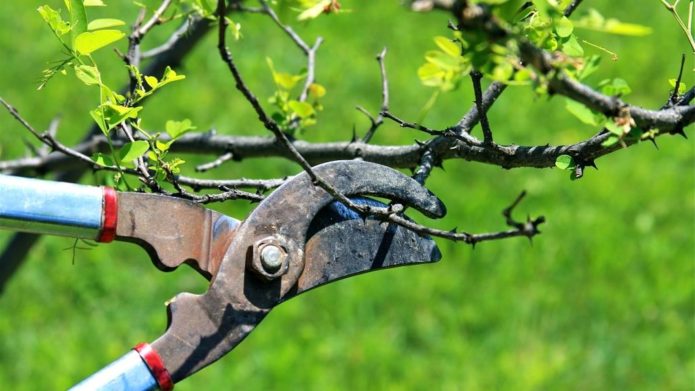
Older gooseberry branches are dark, almost black in color, thicker than younger shoots, may look dry outwardly
If experienced summer residents always have the necessary equipment at hand, then for beginners the absence of one or another tool can greatly interfere with the procedure. To prune branches you will need:
- thick rubber-based gloves;
- a thick long jacket with long sleeves and thick pants to protect the body from scratches;
- chalk, paint, or marker to mark the cuts;
- pruning shears and long-handled pruning shears;
- a sharp saw if you plan to remove thick branches on old bushes;
- garden var for smearing large wounds;
- a wheelbarrow to take out cut branches;
- remedies for treating infection if the bush is damaged by bacteria or viruses.
When is the procedure needed
Gooseberry pruning is required in cases where:
- there are old, sick, withered and broken branches on the bush, they are removed first;
- new shoots have appeared at the very base, they are cut off completely without preserving the hemp;
- the crown has become too voluminous, the outer branches grow inward and intertwine with other shoots;
- some branches are more than 5 years old and do not bear fruit.
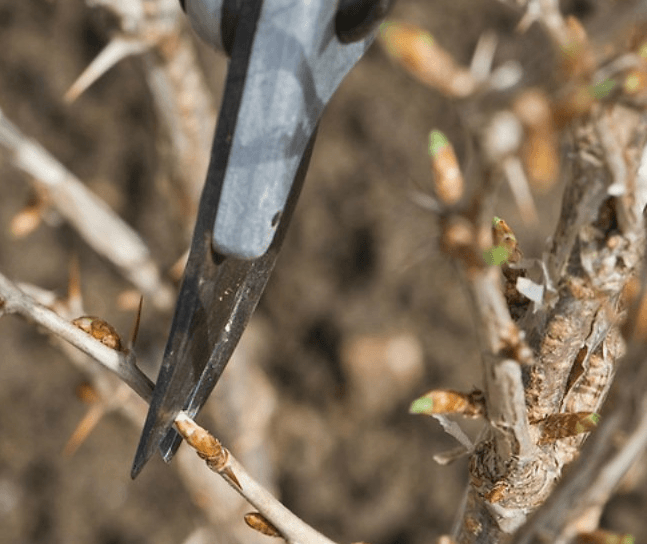
Shoots are cut with pruning shears at the very base of the bush, leaving no stumps so that pests do not settle in them
Fresh shoots of this year are shortened to the largest bud, which should not face the central stem. After the pruning procedure, about 13-14 branches and an additional 4 zero shoots should remain on the gooseberry bush.
Step-by-step instructions for pruning crops in the fall
For simple gardeners who do not have time for long procedures, classic pruning is suitable. When planning branch pruning, you need to decide on the method of forming a bush. There are three methods:
- standard formation;
- classic trimming method;
- growing on a trellis.
The experience of summer residents shows that with the classical scheme of forming a bush, the harvest is the most voluminous.
However, other methods of formation also have their advantages. So, it is easier to pick berries from a bush with trellis pruning, and the standard bush looks beautiful and takes up little space.
Standard gooseberry
With this type of pruning, gooseberries grow into a bonsai. The processing principle in the first year of formation is as follows:
- Choose the strongest branch in the very center of the bush, and remove the rest of the shoots. This branch will become a kind of plant leg.
- Determine the height of the future trunk. As a rule, it does not exceed 1 m.It is necessary to mark the maximum height on the branch with chalk and cut off all side shoots to this level.
- Pick up a support. Optimally in appearance and functionality, a pipe with a height of 1.1 m and 2 cm in diameter is suitable.
- The pipe should be deepened 10 cm into the ground next to the branch chosen as the trunk and attached to it.
In the second, third and subsequent years, pruning occurs according to the following scheme:
- Branches from last year are shortened by half, and 4–5 fresh branches are left from the new ones, cutting off the rest.
- Shoots that are downward or broken after winter are removed.
- The shoots that appear at the bottom of the stem are cut off immediately so as not to waste the strength of the plant.
To form lateral ramifications, the branches are cut 1 cm above the bud, which is pointing upward or facing the desired direction.
Weakened thin branches are cut to the largest bud.
On the trellises
This method is advisable for varieties with strong, actively growing branches and many shoots. Growing gooseberries on trellises occurs according to the following algorithm:
- The bushes are planted in one row at a distance of about a meter from each other.
- Pipes or stakes are driven in between them at an equal distance (about 2 m).
- The stakes are alternately connected with wire or a strong thin rope in 3 rows at this height: 50 cm - 1st row, 80 cm - 2nd row, 1 m - 3rd row.
- Young shoots of gooseberries are tied to a wire with a thin thread, attaches 4–5 branches every 20 cm.
- Excess shoots that are left hanging freely are cut with pruning shears and trimmed as they grow back.
Each subsequent year, it is necessary to prune last year's branches, shortening them by about a third.
Fresh shoots of the new year are also tied up in 4-5 pieces.
Classical bush formation
The standard pruning method turns the gooseberry into the classic shrub that most gardeners will be familiar with. The execution algorithm is as follows:
- Planting year. All damaged and weakened branches are eliminated, the upper part of up to 3 buds is cut off from strong shoots.
- 1st year of life. Selected 3-4 strong trunks, which will form the crown. They cut off 1/3 of the top. Branches that grow parallel to or towards the ground are trimmed close to the trunk.
- 2nd year. The new shoots that have appeared are cut off by 1/3, they also retain 4 zero shoots, the rest are removed.
- 3rd year. If the pruning was carried out earlier, the bush should have at least 12 branches, one to three years old. At this time, the plant begins to bear fruit. New branches are cut again by a third, and up to three zero shoots are left.
- 4-5 years. The grown gooseberry should already take on the appearance of a formed bush. After that, annual pruning consists of sanitizing old and broken branches, as well as cutting off excess shoots.
By the age of eight, the gooseberry bush should have up to eight succulent stems and approximately 22-24 branches of different ages. If pruning is carried out according to all the rules, the crop should be stable and of high quality.
When branches appear that grow downward or parallel to the ground, it is necessary to shorten them so that the outermost bud looks up.
Instructions for work for beginners on video
Pruning for rejuvenation
Such work represents the gradual but complete removal of all branches from which the seedlings have ever grown. Pruning for rejuvenation is recommended for bushes over the age of 10.
The experience of summer residents shows that after rejuvenation treatment, a good harvest returns even to bushes that have not been fruitful for several years.
Pruning is to stimulate the growth of fresh young branches, but should not completely destroy the bush. The replacement is carried out in stages: every year a third of the old branches are removed.
After the procedure, at least 50% of the crown should remain on the bush. It is not recommended to cut off growths from fruiting branches.
Crop care after the procedure: preparing for winter
Pruning branches for any plant is a great stress, therefore, after the procedure, restorative measures are carried out. Care procedures:
- Lubrication of wounds with garden pitch. Also, a mixture of crushed activated carbon and urea in a 1: 7 ratio is suitable as a disinfectant.
- Fertilizing a bush with mineral-organic fertilizing. You can take ready-made mixtures in the store, fertilizer with the inscription "autumn" is ideal. Or you can prepare the composition yourself: mix 15 kg of humus with 200 g of superphosphate and 40 g of potassium.
- Abundant watering, which is designed to provide the plant with moisture for the whole winter. At least two buckets of water are poured under each shrub. Previously, it must settle and warm up.
- Inspection of bushes for the presence of pests or infestations.If there are any, the soil around the trunk is treated with a fungicide (Anthracop, Coronet, Infinito, Flint Star, Teldor). In the form of a prophylactic drug, Bordeaux liquid is used, which is sprayed on the soil and the entire bush.
- Preparing for the winter. It implies insulation of the stems. In areas with harsh climatic conditions, all branches are processed, in warmer ones - only fresh seedlings. Rotten foliage is most often used for insulation.
The layer of insulation should be such as to cover a section of near-trunk soil with a diameter of at least 50 cm.
Gooseberry pruning is a serious and painstaking business. And if an experienced gardener most often does not have problems, then a beginner needs to carefully monitor the timing and technology of the procedure. It is important to adhere to the chosen scheme when processing the plant. In addition, other measures for caring for the berry cannot be ignored. Only then will the harvest please the owner, and the bushes will always be healthy and strong.
